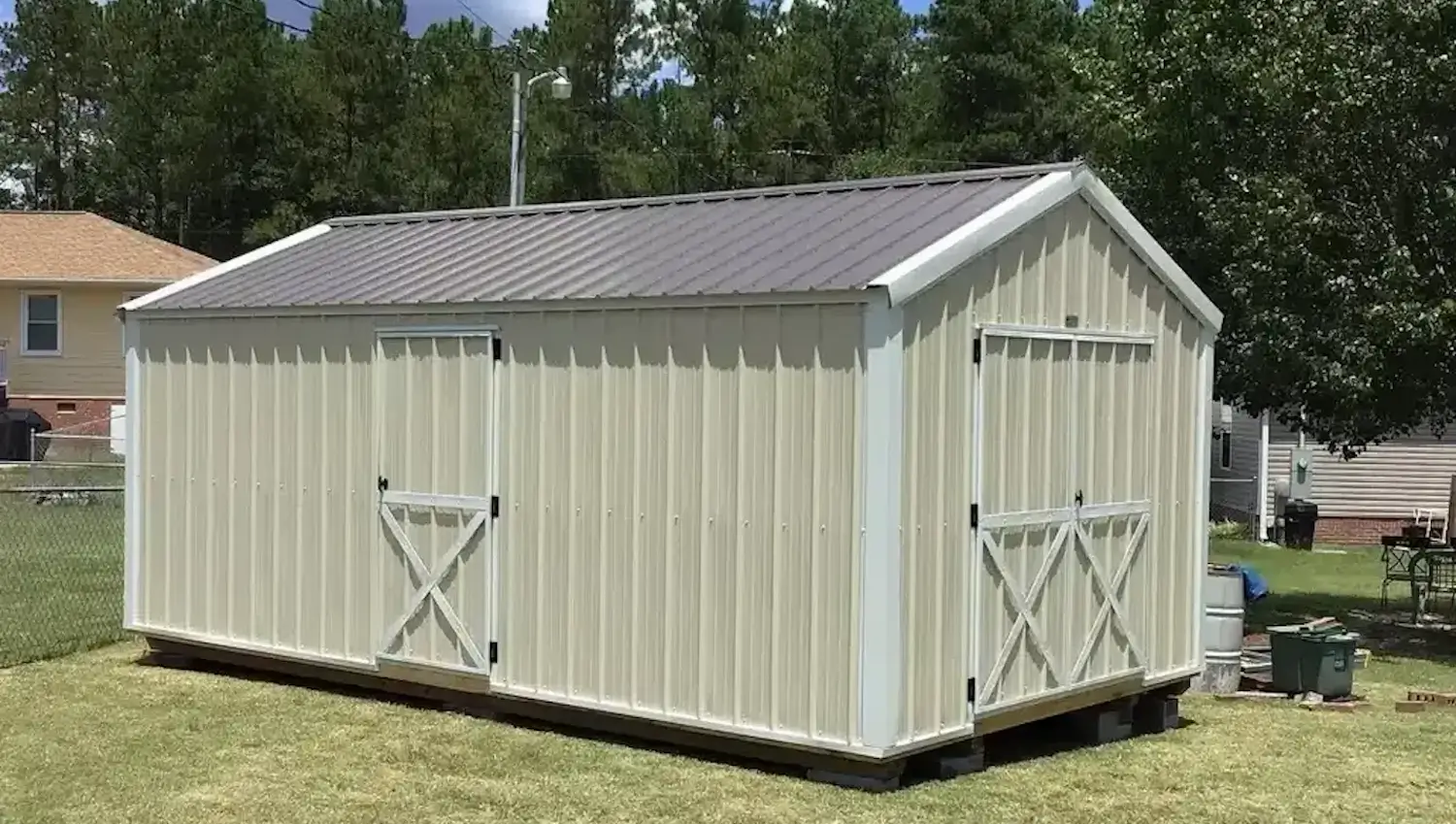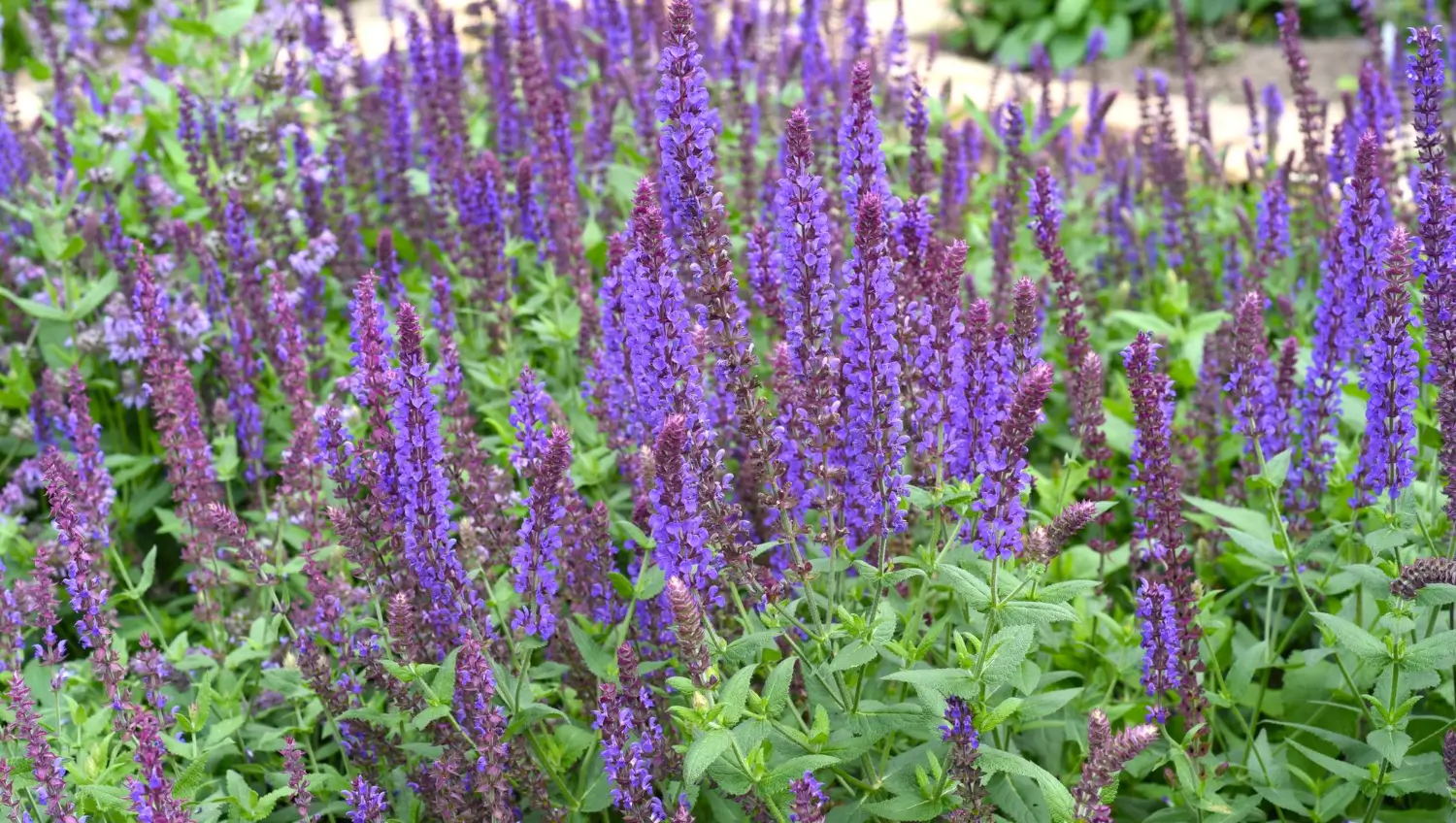
August 24, 2025

Gardening is a hobby that helps the environment, improves mental health, and supports local wildlife. A well-kept garden provides a peaceful space to relax and enjoy nature. It also allows different animals by giving them food and shelter. Among many garden plants, salvia is a popular choice. This long-blooming perennial adds bright colors and attracts pollinators. It comes in shades of blue, purple, red, pink, and white.
Salvia is also easy to grow because it can survive dry conditions and does not need much care. Its nectar-filled flowers attract bees, butterflies, and hummingbirds, which play an important role in pollination. These creatures help plants grow by spreading pollen, allowing flowers, fruits, and vegetables to reproduce.
Growcycle offers essential supplies such as seed starting kits, rooting hormones, and propagation tools. These products support the germination and growth of salvia plants for a thriving garden.
Salvia has been valued for centuries for its medicinal, culinary, and spiritual uses across different cultures. As a member of the mint family (Lamiaceae), this plant has a long history of being used in healing practices, religious ceremonies, and folklore.
Salvia is a diverse genus of herbaceous perennials, annuals, and shrubs belonging to the Lamiaceae (mint) family. With over 900 species, salvia plants are known for their aromatic leaves, vibrant flowers, and adaptability to different climates.
Salvia plants grow in different sizes and shapes. Some are small and bushy, while others grow tall with long flower spikes. Most salvias are perennials, meaning they live for many years, but some species are annuals, completing their life cycle in one season. Salvia plants can grow from a few inches to over six feet tall depending on the type.
Salvia leaves usually grow in pairs opposite each other on the stem. The leaves come in different shapes, including oval, pointed, or slightly serrated (toothed edges). Many salvias have fragrant leaves that release a pleasant smell when touched or crushed. This scent helps protect the plant from pests and makes it useful for herbal purposes.
Salvia produces tall spikes of flowers, which bloom in bright colors such as purple, blue, red, pink, yellow, and white. Each flower has a two-lipped (bilabiate) shape, which makes it easy for pollinators like bees, butterflies, and hummingbirds to collect nectar. These flowers bloom for a long time, making salvia a great plant for attracting pollinators throughout the season.
The stems of salvia plants are usually square-shaped, which is a common feature of the mint family. Some species develop woody stems, especially those that grow as shrubs. The root system is fibrous and strong, allowing the plant to survive dry conditions. Because of this, many salvias are drought-tolerant and grow well in gardens with little water.
After flowering, salvia produces small seeds called nutlets. These seeds can be collected and planted to grow new salvia plants. Some varieties of salvia spread naturally by self-seeding, meaning they drop seeds that grow into new plants without human help.
Salvia is a great choice for any garden because it is easy to grow, visually stunning, and highly beneficial for pollinators.
Salvia is a hardy and adaptable plant that does not need much attention to thrive. It can grow in different soil types as long as the soil drains well. Many species are drought-tolerant, meaning they can survive with little water once established.
Salvia also resists most pests and diseases, reducing the need for chemical treatments. Because it does not require frequent watering or fertilizing, it is a low-maintenance option for gardeners who want beautiful plants without extra work.
Salvia is one of the best plants for attracting pollinators. Its tube-shaped flowers and nectar-rich blooms are perfectly designed for bees, butterflies, and hummingbirds. These creatures rely on nectar for food, and salvia provides a continuous supply throughout the blooming season.
Pollinators are essential for a healthy ecosystem because they help plants reproduce. By planting salvia, gardeners can support local pollinator populations and encourage biodiversity.
Salvia adds beauty and color to any garden with its long-lasting flowers and wide range of shades, including purple, blue, red, pink, and white. It blooms from spring to fall, providing months of vibrant color.
The tall, spiky flower stalks of salvia create a striking contrast with other garden plants, making it an excellent choice for flower beds, borders, and containers. Its evergreen or semi-evergreen foliage adds texture and greenery, keeping gardens attractive even when flowers are not blooming.
Salvia is a versatile and hardy plant that thrives in various environments, but certain conditions help it grow best. Gardeners can ensure healthy plants with vibrant flowers and long-lasting blooms by providing the right soil, sunlight, and water.
Salvia grows best in well-draining soil that is slightly acidic to neutral (pH 6.0 to 7.5). Heavy, compacted soils that hold too much moisture, such as clay soil, can lead to root rot. If the soil is too dense, mixing in sand, perlite, or compost can improve drainage and provide essential nutrients. Adding organic matter like compost or aged manure helps create a light, nutrient-rich soil that supports strong root growth.
Most salvia varieties thrive in full sun as they need at least 6 hours of direct sunlight per day. Some species, especially woodland salvias, can tolerate partial shade, but too much shade may result in fewer flowers and weak growth.
Salvia is adaptable to different climates, but it prefers warm temperatures and is often found in Mediterranean, tropical, and temperate regions. Many varieties are drought-tolerant once established, making them ideal for hot and dry climates. In colder regions, some species may need mulching in winter to protect their roots from frost.
Salvia is drought-resistant, but young plants need regular watering until their roots are established. Once mature, most varieties only require occasional watering, especially in dry periods. It is important to water deeply but infrequently, allowing the soil to dry out between waterings.
Proper drainage is essential to prevent root rot, which occurs when soil stays too wet for long periods. Gardeners should avoid overwatering and ensure pots or garden beds have drainage holes to escape excess water. In rainy climates, planting salvia in raised beds or sloped areas can help prevent water from pooling around the roots.
Salvia is easy to plant and grow, making it a great gardener choice. Whether planting in garden beds or containers, following the right steps will help ensure healthy growth and long-lasting blooms.
The best time to plant salvia is in spring or early fall. Planting in spring gives the plant enough time to establish roots before the hot summer months, while planting in fall allows the roots to grow before winter dormancy. In warmer climates, fall planting is often preferred because cooler temperatures reduce stress on the plant.
When planting salvia, proper spacing is important to allow good air circulation and prevent overcrowding.
After planting, water thoroughly to help the roots settle. If planting multiple salvias, consider arranging them in groups or clusters to create a fuller, more attractive display.
Salvia is a low-maintenance plant, but regular care ensures healthy growth and continuous blooms. Proper watering, pruning, pest management, and seasonal care help keep the plant vigorous and attractive year-round.
Regular pruning and deadheading (removing spent flowers) keep salvia blooming for a longer time. Deadheading prevents the plant from putting energy into seed production and encourages continuous flowering throughout the season.
For perennial salvias, cutting the plant back by one-third after the first bloom can promote a second wave of flowers. In late fall or early spring, a hard prune (cutting stems close to the base) helps remove old growth and prepare the plant for the next season.
Shrub-like salvias benefit from light pruning throughout the year to maintain shape, while woody salvias should only be pruned lightly to avoid cutting into old wood that may not regrow.
Salvia is generally resistant to pests and diseases, but some common issues can still arise.
Salvia needs different care depending on the season:
Salvia can play an important role in supporting pollinators and biodiversity. By providing a reliable food source for bees, butterflies, and hummingbirds, salvia helps maintain a healthy ecosystem and encourages a thriving garden environment.
Salvia contributes to local ecosystems by providing nectar for pollinators and supporting plant reproduction. Pollinators, such as bees and butterflies, transfer pollen from flower to flower, helping plants produce seeds, fruits, and vegetables. This process is essential for food production and plant diversity.
Additionally, a garden filled with salvia reduces the need for chemical pesticides, as natural pollinators help maintain a balanced ecosystem. By planting salvia, gardeners create a habitat that supports both plant and animal life, promoting a healthier environment.
Depending on the species, salvia has two types of pollination: entomophily and ornithophily. The tubular shape of salvia flowers makes them perfect for bees, butterflies, and hummingbirds, which have long tongues designed to reach deep into the blooms.
Salvia is a versatile, low-maintenance perennial that improves gardens with its vibrant blooms while supporting local pollinators. Its ability to thrive in different climates, resist drought, and attract bees, butterflies, and hummingbirds makes it an excellent choice for people to grow.
With the right care, including proper soil preparation, watering, and pruning, salvia will continue to bloom season after season. Explore Growcycle to learn how to care for perennial plants in the garden.
Disclaimer: This material is for informational purposes only and should not be relied on for legal, medical, financial, or any other form of professional advice.
Salvias attract bees, butterflies, and hummingbirds, which feed on their nectar and help with pollination.
Depending on the species, salvia exhibits entomophily (pollination by insects) and ornithophily (pollination by birds). Bees and butterflies pollinate most salvias, while hummingbirds pollinate red and tubular varieties.
Pollinators are attracted to flowers with bright colors, nectar-rich blooms, a strong fragrance, and easily accessible pollen.